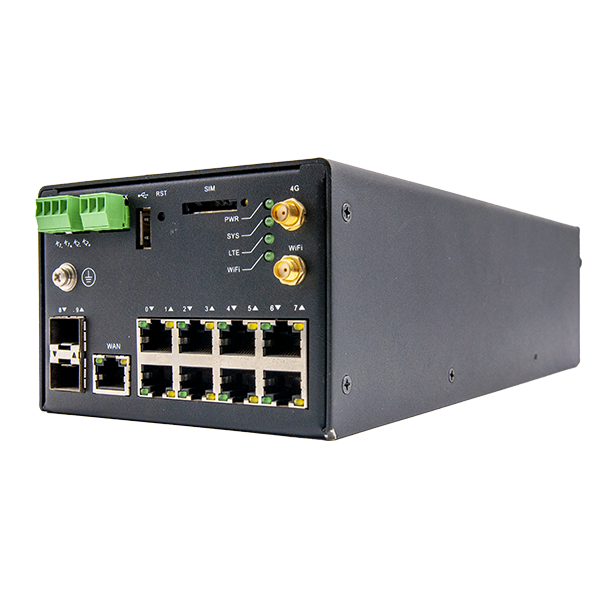SEARCH
— 葡萄酒 | 威士忌 | 白兰地 | 啤酒 —
— 葡萄酒 | 威士忌 | 白兰地 | 啤酒 —

iot
In simple terms, an industrial gateway is a hardware device that connects one network environment to another, including communication gateways, protocol converters, remote terminal units (RTUs), and other devices applicable to complex industrial environments. It serves as a hub between field devices and system platforms in industrial IoT, enabling data interoperability and maximizing the value of data.
Data Collection and Forwarding Function
As the most basic function of an industrial gateway, it needs to connect sensors, instruments, PLCs, and other devices in the industrial field through industrial bus interfaces (RS485, CAN), wireless interfaces, and network interfaces. The gateway can adapt to the communication protocols of field devices, such as Modbus, Siemens S7 protocol, DLT645, CJT188, etc., to read device data and issue control commands. The gateway can upload the collected data to the system platform via 4G/5G, industrial bus interfaces, network interfaces, etc. Additionally, the gateway itself can also have I/O interfaces to meet more complex control requirements in the industrial field.
The gateway is like “a multilingual translator” who can translate multiple different languages into a language that the platform can understand, enabling field devices and platforms to understand each other.

SG800 4G Edge Computing Gateway
Storage and Breakpoint Continuation
Data is invaluable, and the loss of basic data can even lead to the failure of platform applications. The internal storage of the industrial gateway is crucial. The gateway can store the collected data in its own storage, which is not lost even when power is off, forming a dual backup with the platform. The platform can call historical data at any time.
When the 4G/5G base station has issues or is under maintenance, and the platform loses contact with the field, the gateway continues to collect and store data on-site. After restoring communication with the platform, it can upload the data from the disconnected moment to the platform, ensuring the integrity of the platform’s basic data. Only then can the platform fully explore the application of the data, bringing value to the customer.
Edge Computing
“Cloud-Edge Collaboration” is already a significant trend in the current IoT landscape, where the platform offloads computing tasks, requiring industrial gateways to have edge computing capabilities.
In practical applications, the platform connects a large number of devices, resulting in a massive amount of concurrent data, putting significant pressure on the platform and the network (especially 4G/5G fees). The industrial gateway can process on-site data according to preset conditions and upload the results to the platform. For simple linkage control and alarms, edge computing can also be achieved locally through logical programming, greatly improving the real-time performance of control and alarms. Secondary development is also a form of edge computing, such as cross-platform development and container APP development. The edge computing of industrial gateways should be an open platform, allowing both debugging engineers and development engineers to meet their edge computing needs.

smart pole gateway
Remote Maintenance and Debugging, Lightweight Service
The cost of on-site maintenance by personnel can sometimes be higher than the cost of the equipment itself, so remote maintenance is essential.
After the industrial gateway connects to the public network, the accompanying debugging software should be able to remotely connect to the on-site gateway through a remote server. Engineers can debug the on-site gateway or troubleshoot on-site issues from their office, immediately solving problems remotely and greatly improving operational efficiency. Truly achieving “planning from afar, winning from a distance.”
In addition, industrial gateways should also have functions such as software and hardware security encryption, wireless networking, high-performance chips, 4G routing, and firewalls, which are not detailed here.
With the rapid development of electronic communication, cloud platforms, IoT, and other technologies, urban information development and industrial control are undergoing significant changes and new breakthroughs. Cities are gradually evolving from automation and digitization to intelligence, and industrial manufacturing is also moving towards the era of Industry 4.0, with the requirements for terminal sensing devices shifting from digitization to intelligence.
Smart cities are a broad concept, including smart water utilities, smart lamp posts, smart traffic, etc. The IoT system is the core of smart city construction, and industrial gateways, as an indispensable part of the IoT system, play a crucial role in connecting and integrating various elements.
In smart and automated factories, gateways connect various on-site sensors, PLCs, and human-machine interfaces, and upload on-site information to the central control room platform, providing timely feedback on on-site production information.
In industries related to energy such as electricity, gas, and petrochemicals, where equipment is installed across the country and scattered, centralized maintenance is required. Industrial IoT gateways are used to collect data from on-site instruments, sensors, and other devices and upload it to the energy platform.
As many of us gradually upgrade our devices, Wi-Fi 6 is becoming the mainstream wireless standard in homes, making it a recent necessity to update our routers. However, just as we are considering Wi-Fi 6 routers, news of Wi-Fi 7 has emerged, with ...
View detailsHi there! Are you looking for the best industrial 4G router on the market? Look no further than the SR700-D from Xiamen Yeaplink Technology Co., Ltd. This powerhouse router is packed with features that make it perfect for demanding industrial app...
View detailsTo ensure stable network quality, it is necessary to stabilize the network transmission speed. Therefore, to achieve an infinite network extension, using switches as "amplifiers" and "stabilizers" is essential and a correct choice.
View detailsthe key differences between WiFi 7 and WiFi 6, including speed, frequency bands, and modulation techniques. Learn how these advancements impact vehicle gateway technology and mobile connectivity.
View detailsMo